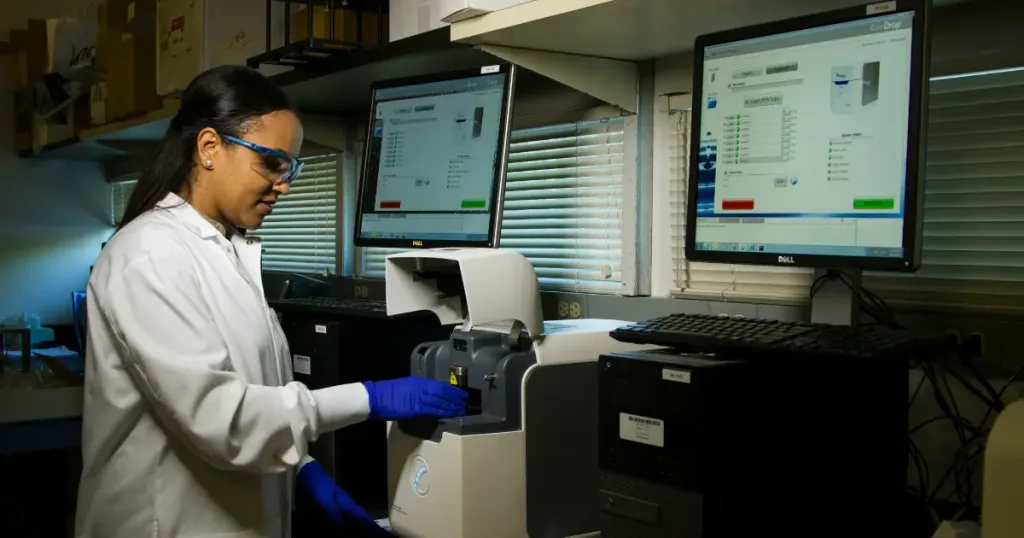Microservices have shaken things up in software development by breaking down monolithic applications into smaller, independent services. This approach offers significant benefits such as agility, scalability, and faster deployments. However, it also introduces the challenge of service discovery in a constantly changing environment.
Static configurations are a thing of the past. In ever-evolving microservices, services can be scaled up or down on the fly, deployments happen frequently, and infrastructure can be temporary. This means we need a reliable way for services to find each other, and that’s where service discovery tools come in.
The Benefits of Using Service Discovery Tools Effectively

Effective service discovery is critical in maintaining fault tolerance and ensuring the scalability of your microservices architecture. By adopting service discovery tools, SRE teams can:
- Simplify Service Communication: Service discovery tools maintain a centralized service registry, leading to cleaner code and reducing maintenance overhead associated with hard-coded service addresses.
- Boost Scalability: These tools enable dynamic scaling of services without requiring code changes in dependent services, simplifying operations and optimizing resource management.
- Improve Fault Tolerance: By integrating health checks, service discovery tools ensure automatic failover to healthy instances, fostering a resilient microservices architecture.
- Streamline Development and Deployment: Centralized service discovery simplifies development by providing a single source of truth for service locations. This allows for faster deployments without the need to modify configurations across the entire system.
Service Discovery Tools: The Matchmakers of Microservices

Service discovery tools act as the central nervous system for a microservices architecture. In microservices architectures, maintaining fault tolerance and scalability heavily relies on their effectiveness.They allow services to:
- Register themselves: Services announce their presence and capabilities through the service registry. This process typically includes providing details such as service name, location (IP address, port), health status, and other relevant information.
- Find other services: Effective service discovery ensures scalability by enabling services to dynamically locate and interact with each other, even as the system evolves. Services use the discovery tool to find the location of other services they need to work with. This could involve searching the registry based on service name, tags, or specific functionalities.
- Stay up-to-date: Service discovery tools constantly monitor service health and availability. This ensures that services are always directed to healthy instances, and failures or changes in service location are reflected promptly within the registry.
4 Popular Service Discovery Tools for SREs
Several service discovery tools have emerged as battle-tested options for managing microservice communication. Here’s a closer look at some of the most popular choices:
Consul
The Feature-Rich Powerhouse
Developed by HashiCorp, Consul is a feature-rich service discovery tool that provides service registration, health checks, leader election, and key-value storage functionalities. It’s known for its ability to scale and stay available.
- Feature-packed: Offers service registration, health checks, leader election, key-value storage, and DNS capabilities.
- Highly scalable and available: Scales to meet large deployments and offers strong fault tolerance mechanisms.
- Well-integrated with HashiCorp ecosystem: Plays nicely with other HashiCorp tools like Nomad for orchestration.
- Complexity: Can be hard to set up and manage compared to some lightweight options.
- Resource footprint: Might be overkill for smaller deployments due to its feature set.
Ideal for: Large-scale, complex microservices architectures that require a comprehensive service discovery solution with robust features and integrations.
etcd
The Distributed Key-Value Store Powerhouse
A highly available, distributed key-value store, etcd is often used as the foundation for service discovery in Kubernetes environments. It excels at storing configuration data and service registration details for distributed systems.
- Lightweight and highly available: Efficient resource utilization and strong fault tolerance make it suitable for large deployments.
- Simple API: Easy to integrate and manage compared to more feature-rich tools.
- Strong foundation for Kubernetes: Often used as the underlying storage for service discovery in Kubernetes environments.
- Limited feature set: Primarily focused on key-value storage, requiring additional tools for health checks and other functionalities.
- Set up: Might require additional configuration for service discovery beyond basic registration.
Ideal for: Deployments using Kubernetes or those prioritizing a lightweight, high-performance service discovery solution with a simple API.
Eureka
The Lightweight Champion
This popular open-source tool from Netflix provides a REST API for service registration and discovery. Eureka is a lightweight solution known for its ease of use and focus on service resilience.
- Simple and easy to use: Lightweight and focuses on core service discovery functionalities.
- Open-source and well-documented: Large community and extensive documentation for easy adoption.
- Integrates well with Spring Cloud ecosystem: Ideal for projects already using Spring technologies.
- Limited scalability: Might not be suitable for very large deployments due to potential scalability limitations.
- Relies on client-side registration: Requires service clients to register themselves, which might add complexity in some scenarios.
Ideal for: Smaller to medium-sized microservices deployments or projects using Spring technologies that value simplicity and ease of use.
ZooKeeper
The Veteran Coordinator
Originally developed for Apache Hadoop, ZooKeeper provides a distributed coordination service that can be leveraged for service discovery. It’s known for its strong consistency guarantees and fault tolerance mechanisms.
- Mature and battle-tested: Proven track record and strong consistency guarantees.
- Highly available and fault-tolerant: Offers robust mechanisms for handling failures and ensuring service continuity.
- Distributed coordination beyond service discovery: Can be used for other distributed coordination tasks beyond service registration.
- Can be complex to set up and manage: Steeper learning curve compared to some lightweight options.
- Might be overkill for basic service discovery needs: Feature set extends beyond core service discovery functionalities.
Ideal for: Large-scale, complex deployments requiring strong consistency guarantees and fault tolerance, potentially leveraging ZooKeeper for other distributed coordination tasks.
Choosing the Right Tool: It’s All About Trade-offs
As you can see, each service discovery tool offers unique strengths and weaknesses. The ideal choice depends on your specific needs:
- Scalability: Consider the size and complexity of your microservices architecture. For large deployments, Consul or etcd might be better suited.
- Ease of Use: If simplicity is a priority, Eureka or etcd might be more appealing options.
- Feature Set: Evaluate the functionalities you require. If you need a comprehensive solution with leader election or key-value storage, Consul might be the way to go.
- Integration: Consider existing technologies in your stack. Eureka integrates well with Spring Cloud, while etcd is a natural fit for Kubernetes.
Service Discovery – The Unsung Hero of Microservices, and The SRE Talent You Need to Champion It
Service discovery tools are the silent guardians of a well-functioning microservices architecture. They ensure services can dynamically discover and interact with each other, even in a constantly evolving environment.
But building and maintaining such an architecture requires a skilled and passionate Site Reliability Engineering team (SRE). At Ubiminds, we understand the importance of finding the perfect SRE talent.
Our team of talent acquisition specialists takes the time to understand your specific needs and company culture. We then leverage our extensive network to find SRE experts who are not only qualified to tackle the challenges of service discovery and microservices architectures, but who will also be a great fit for your team.
Let Ubiminds help you find the SRE talent you need to champion the success of your microservices architecture. Contact us today and see how we can empower your team to build the future!

International Marketing Leader, specialized in tech. Proud to have built marketing and business generation structures for some of the fastest-growing SaaS companies on both sides of the Atlantic (UK, DACH, Iberia, LatAm, and NorthAm). Big fan of motherhood, world music, marketing, and backpacking. A little bit nerdy too!









